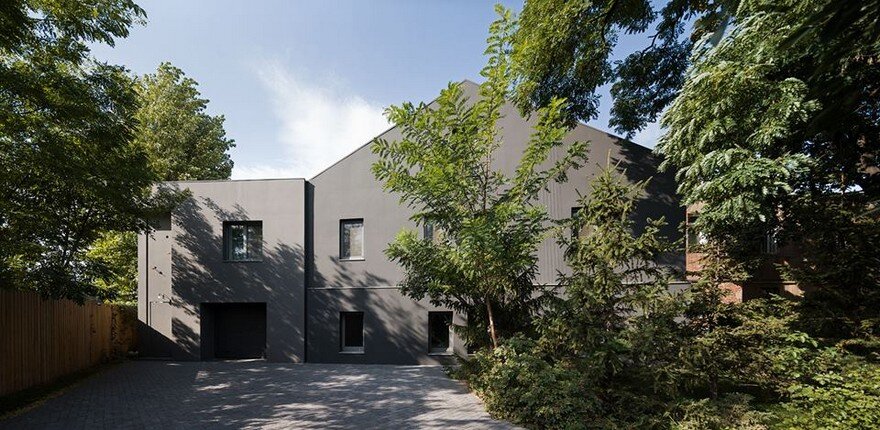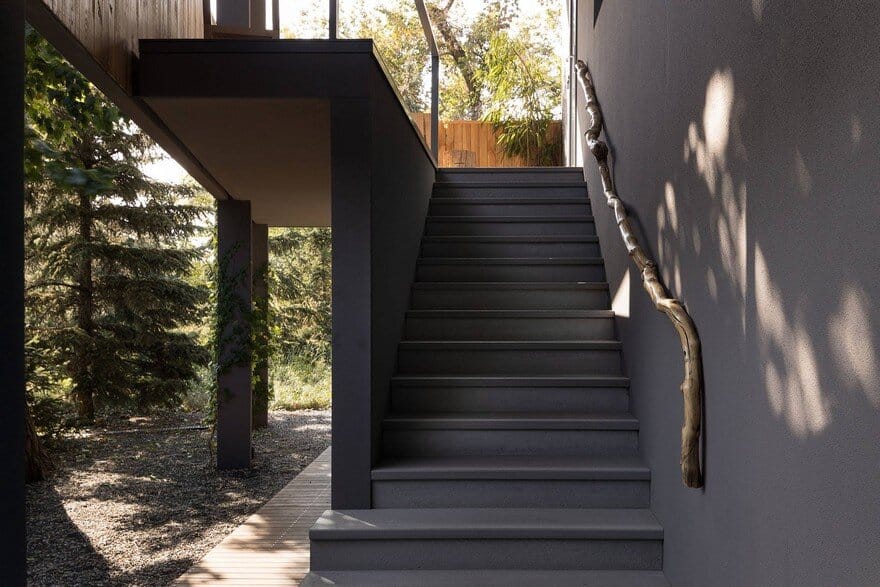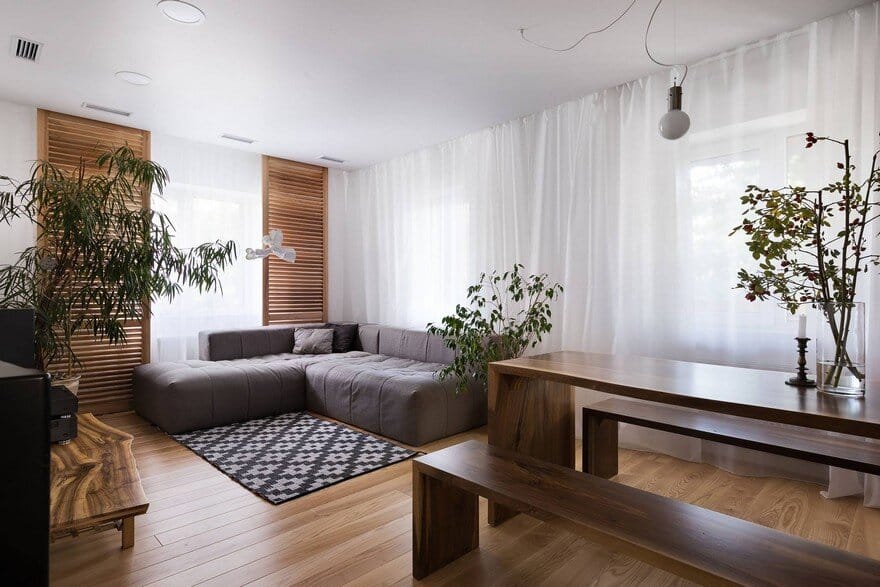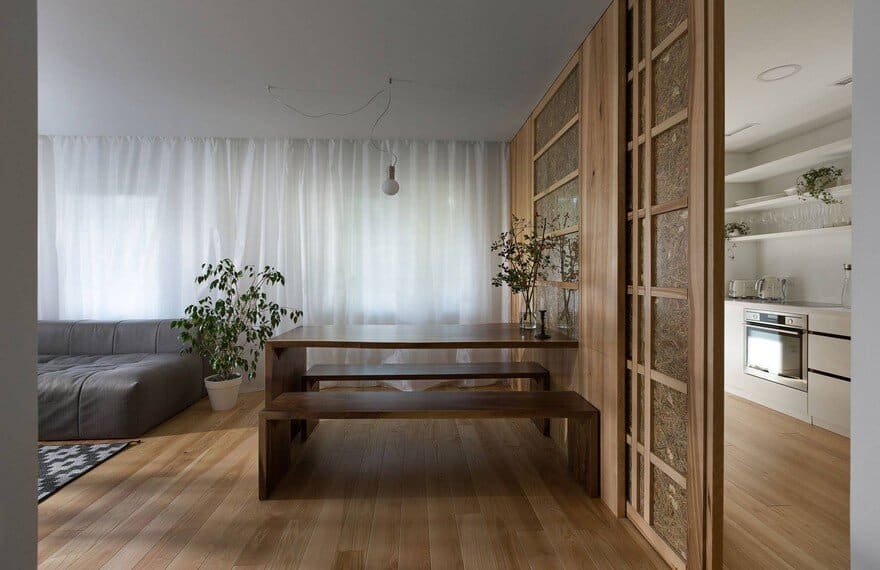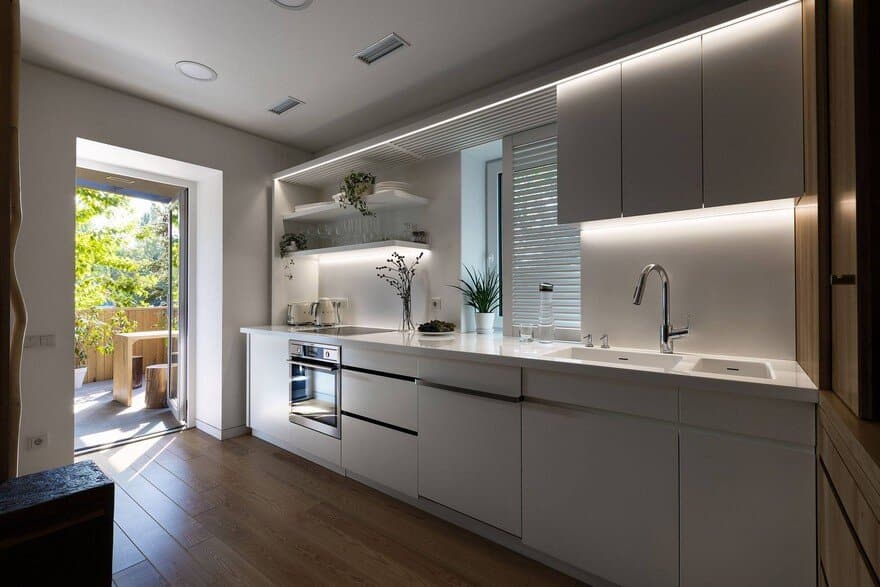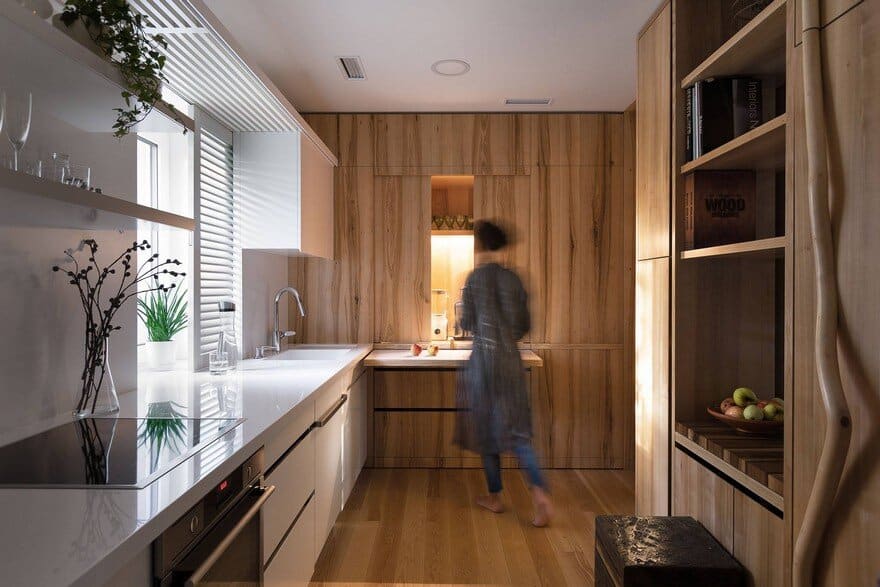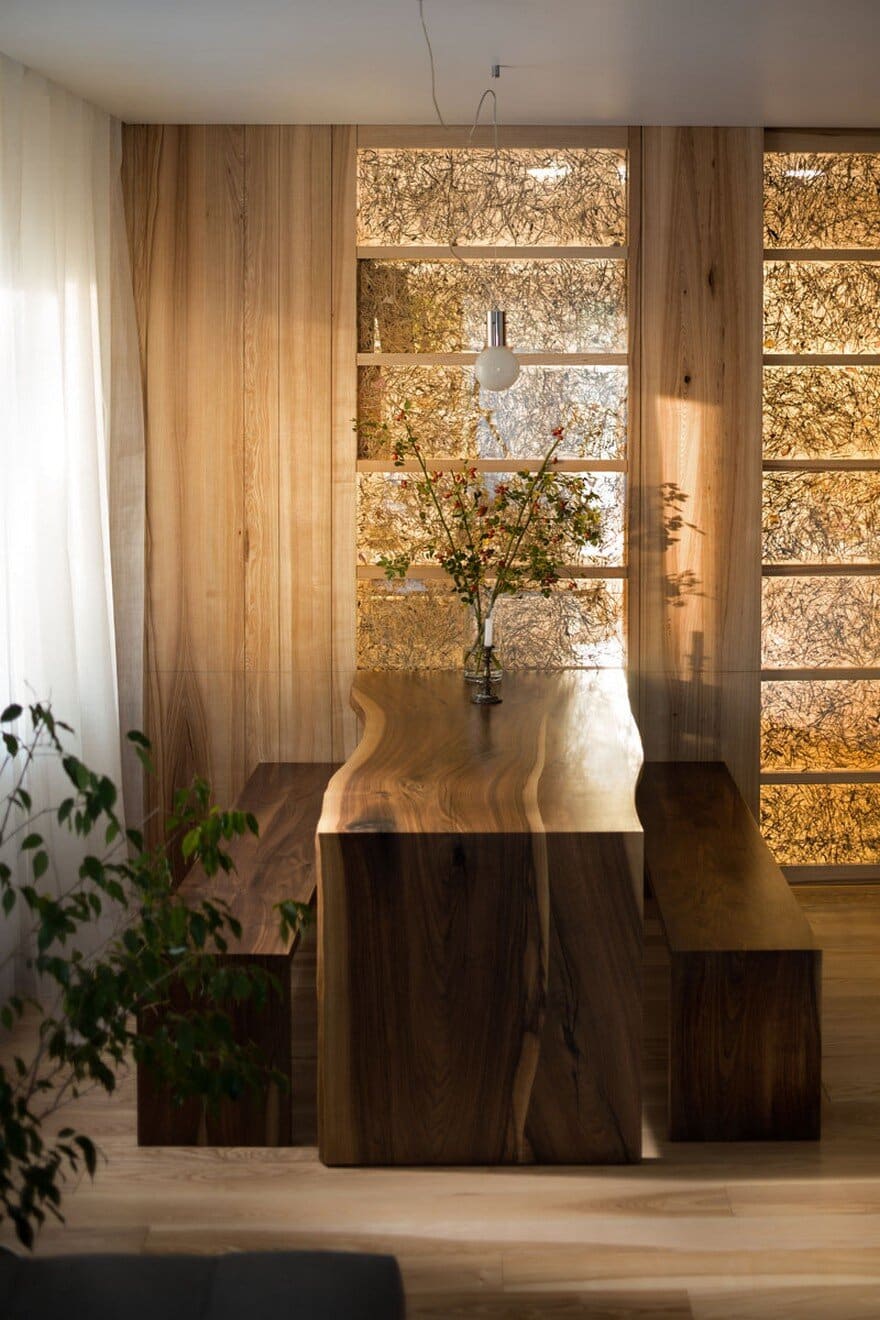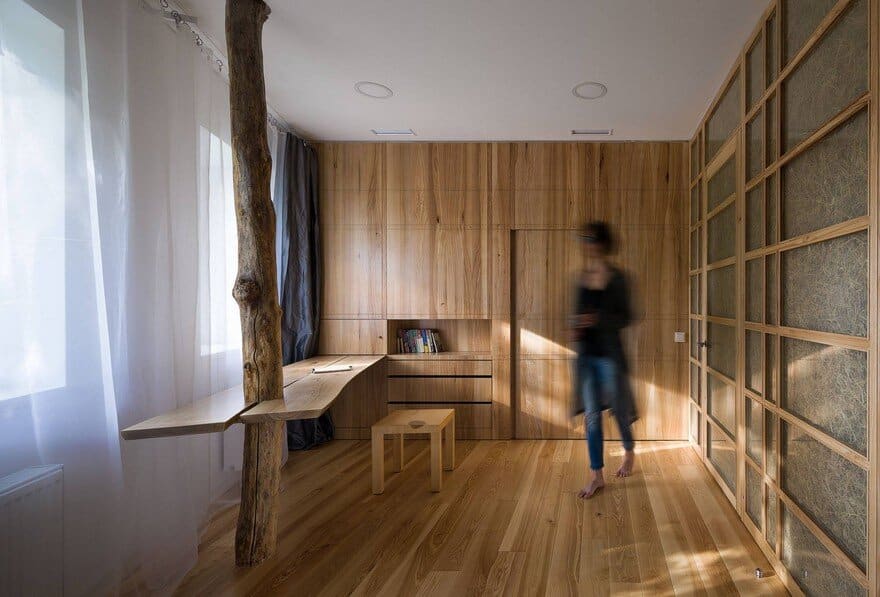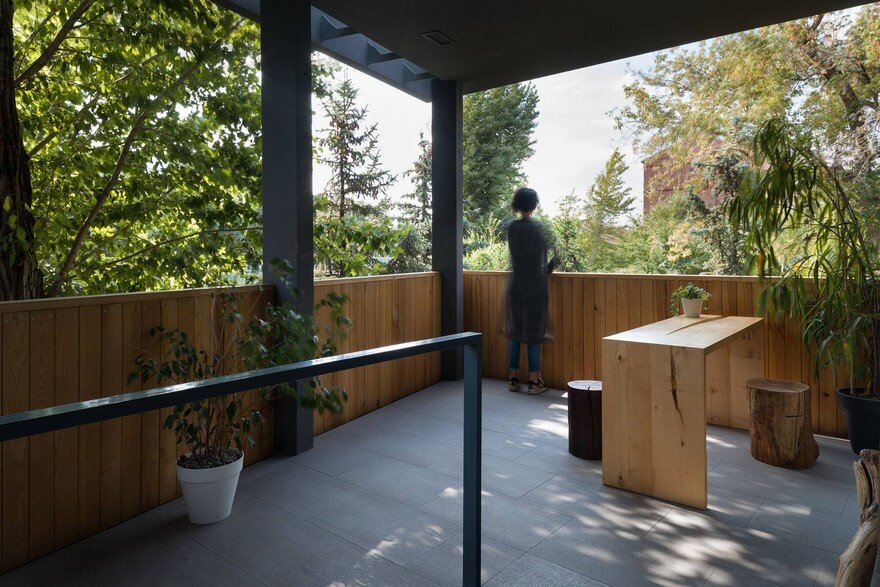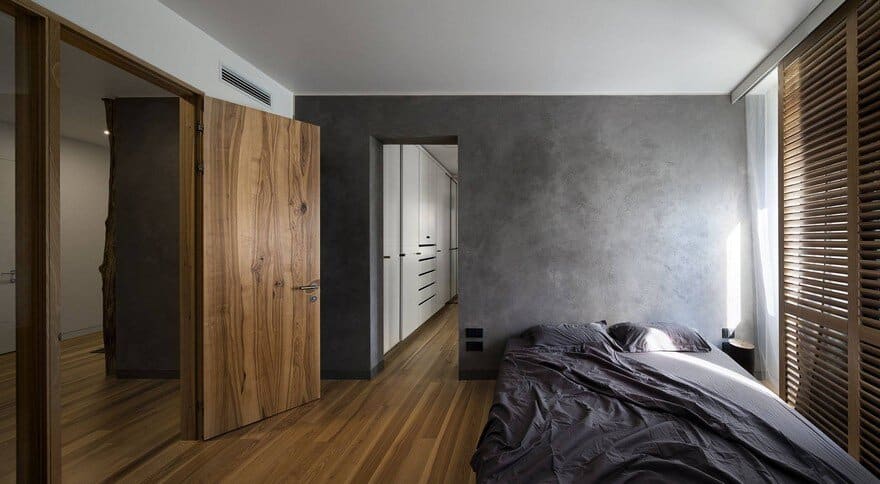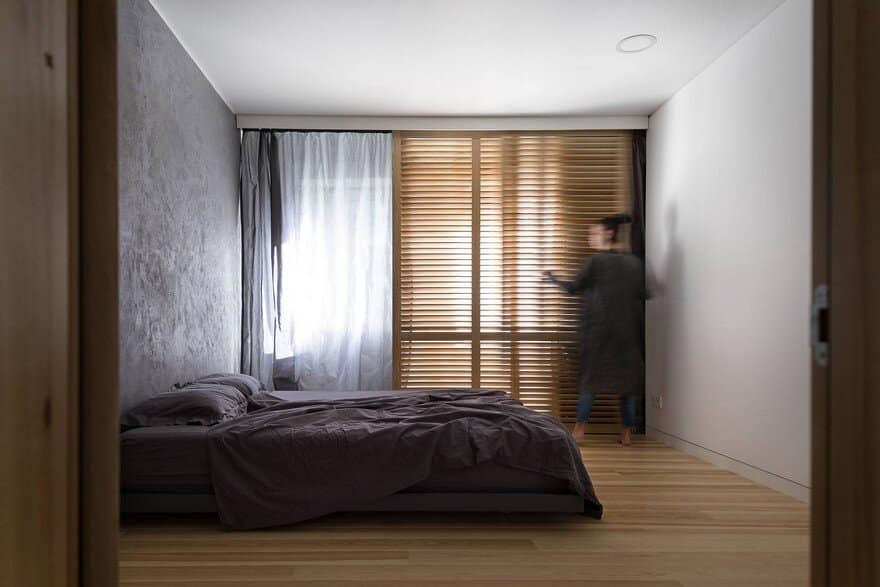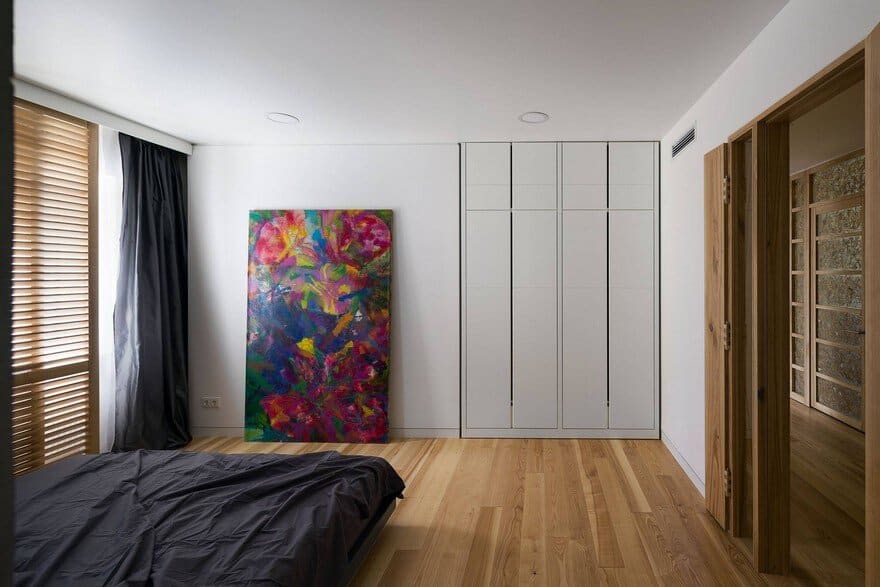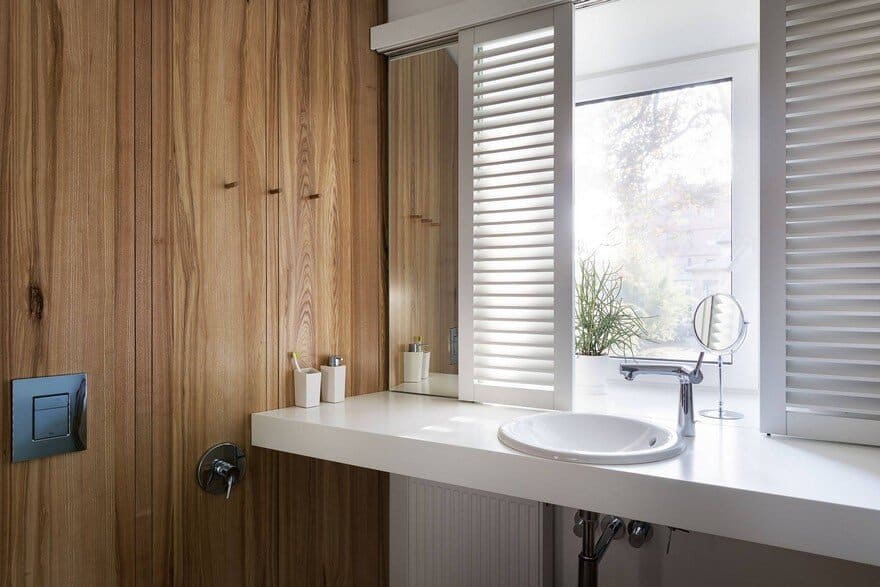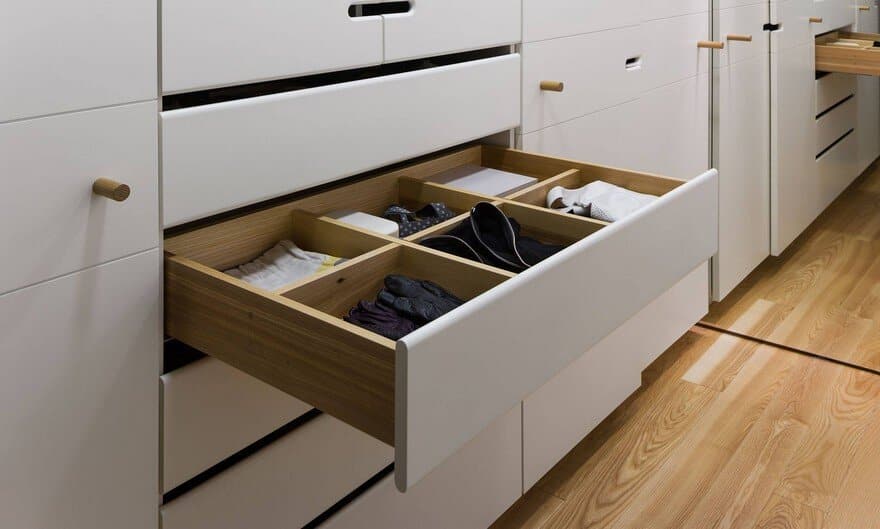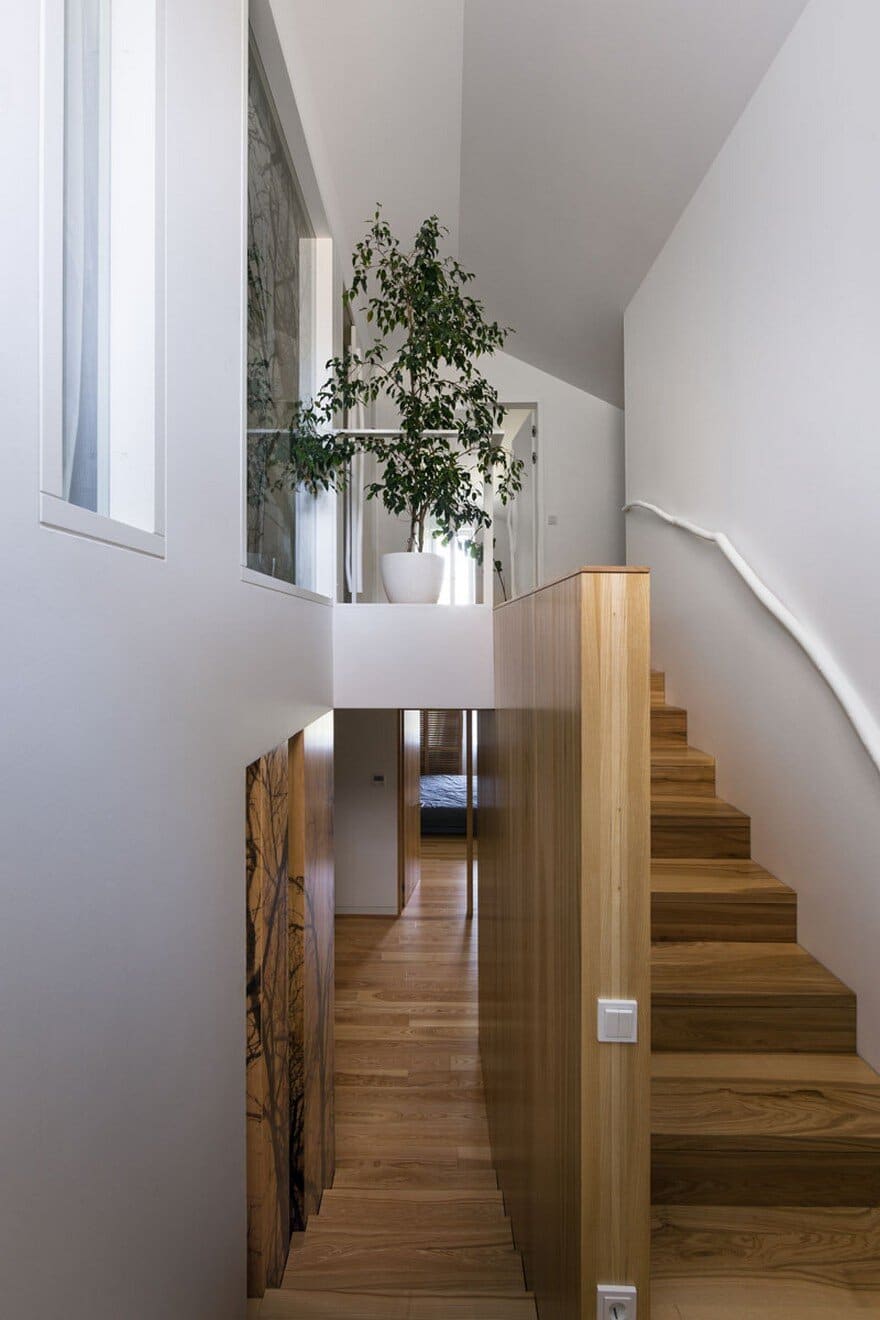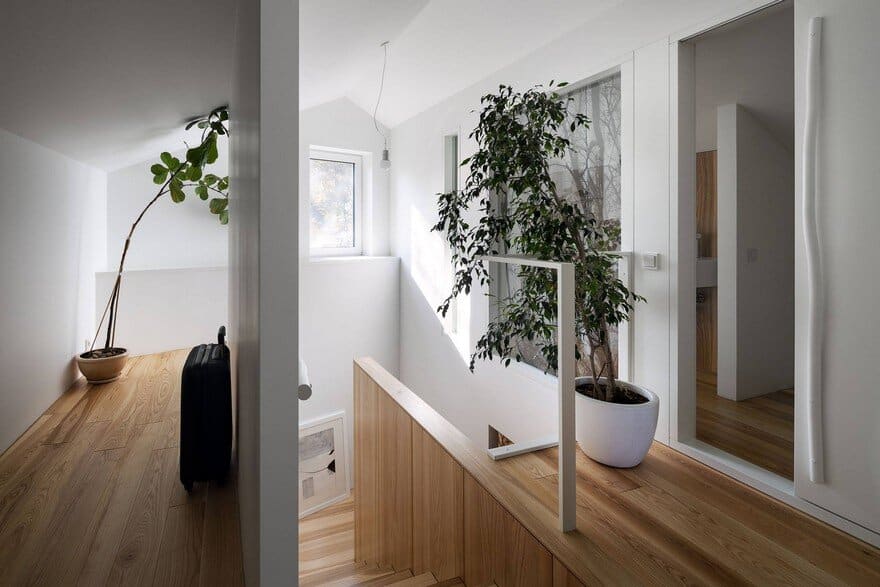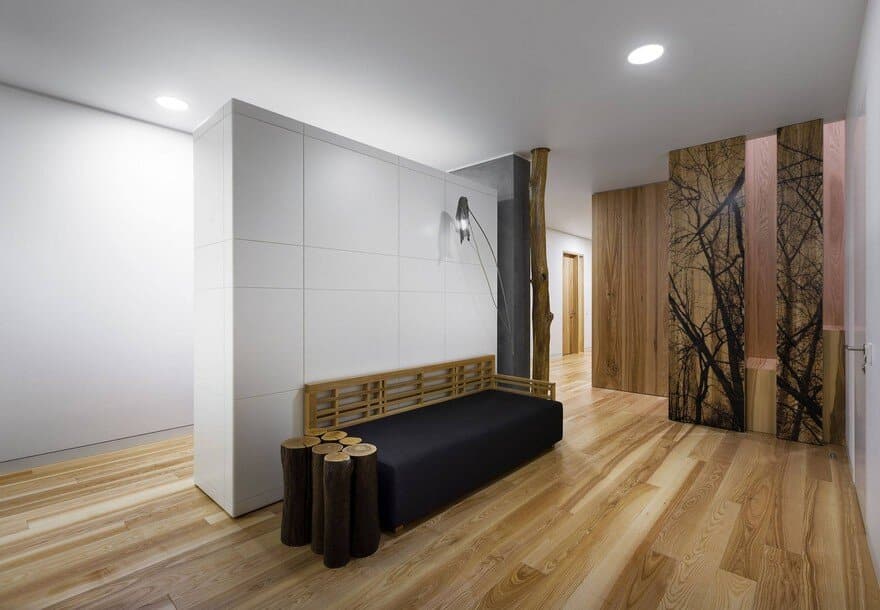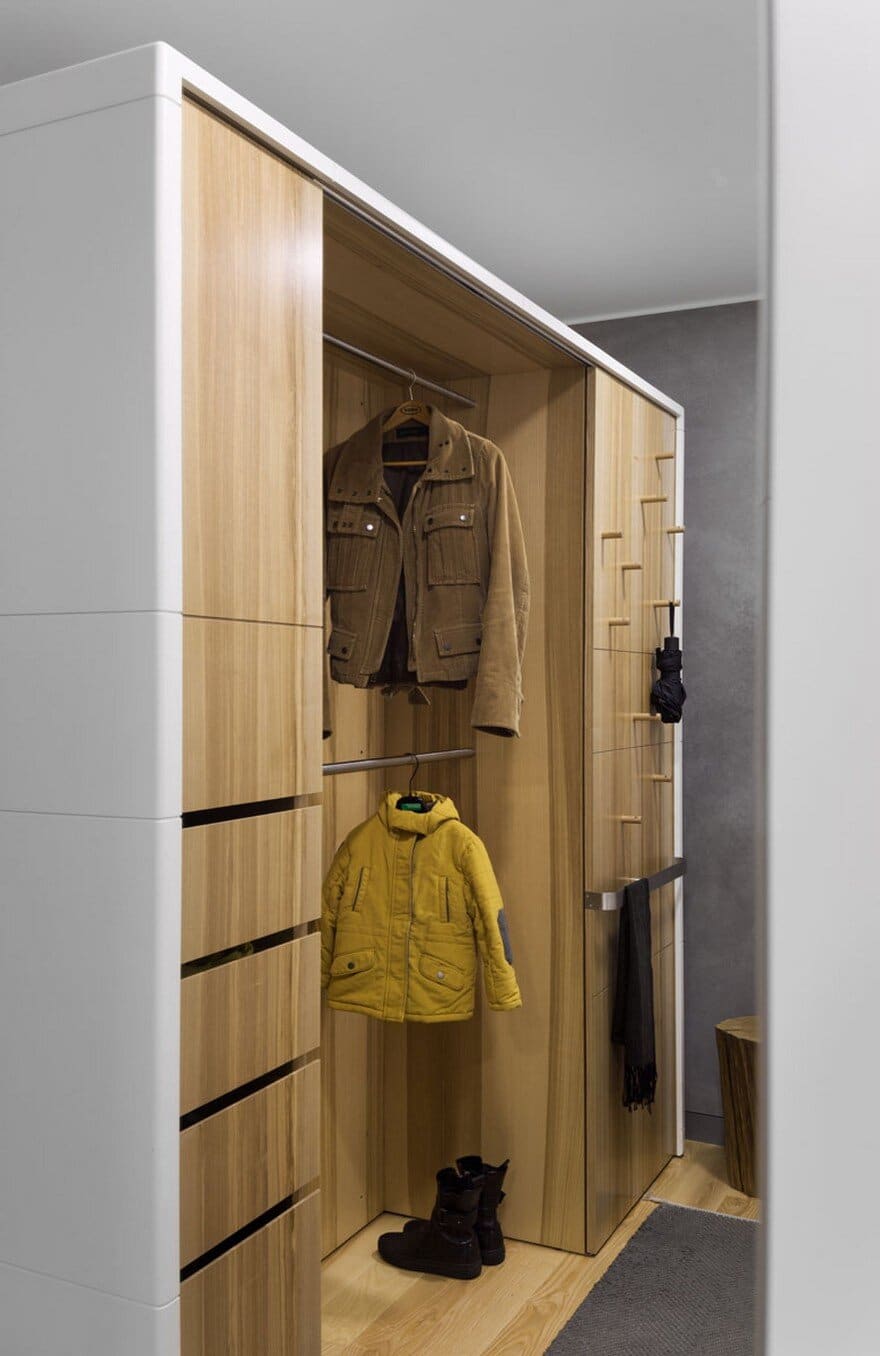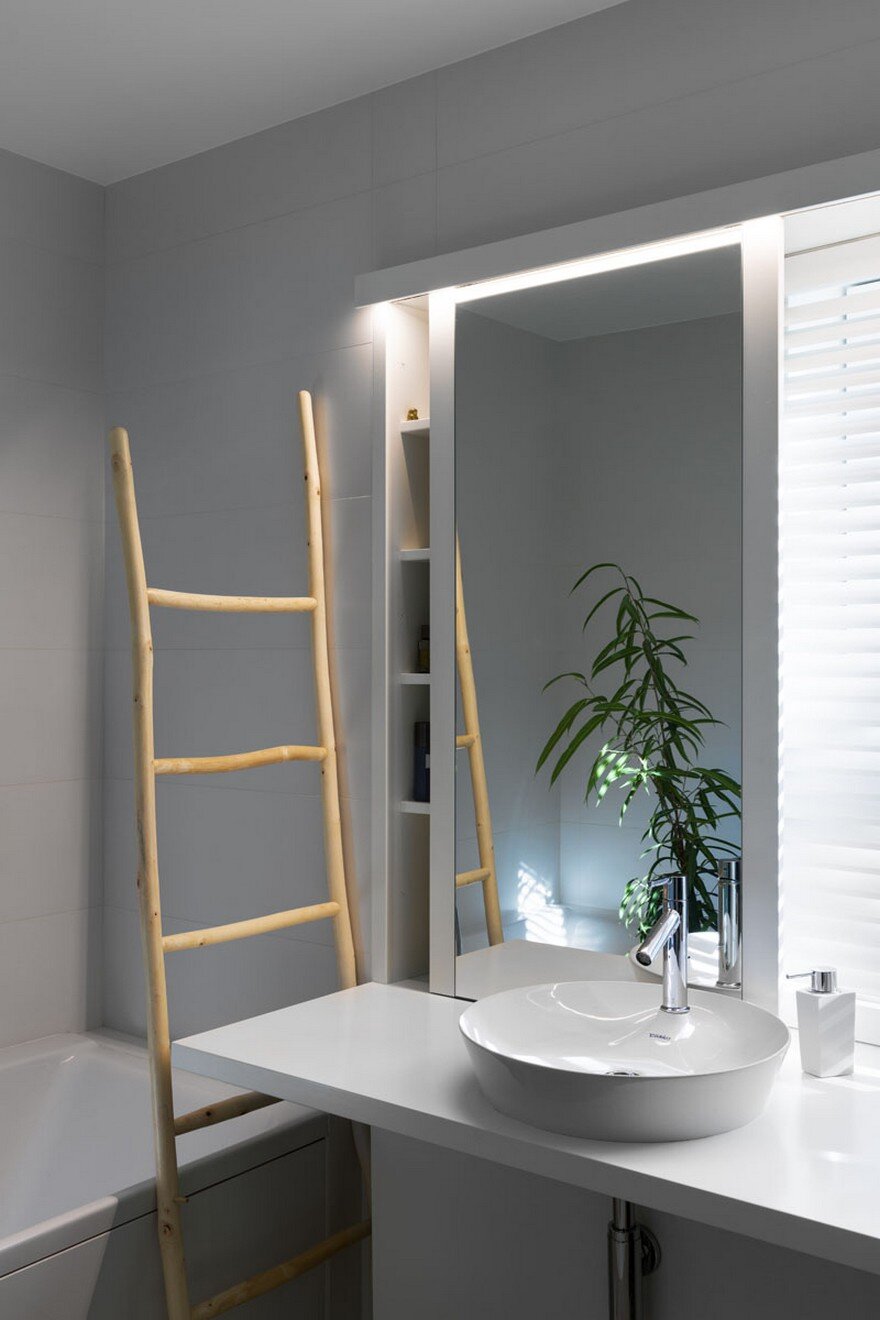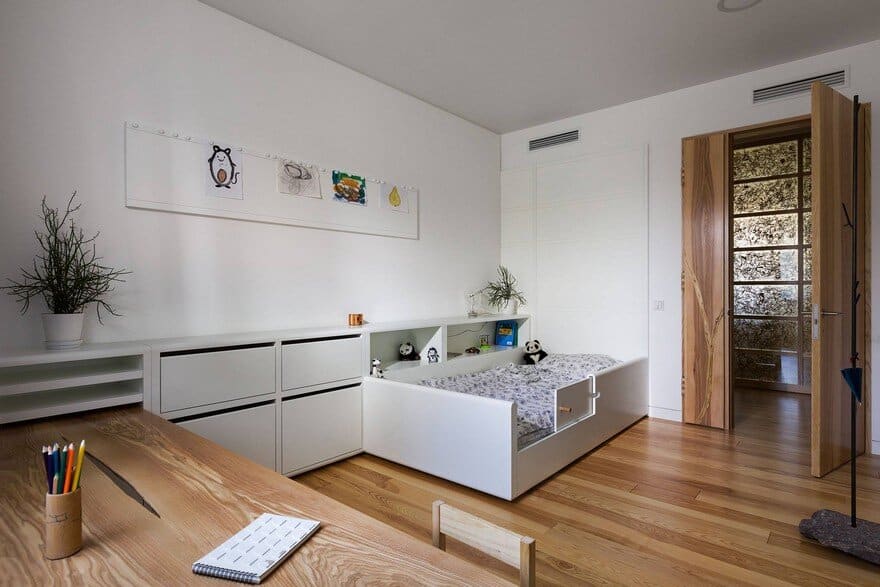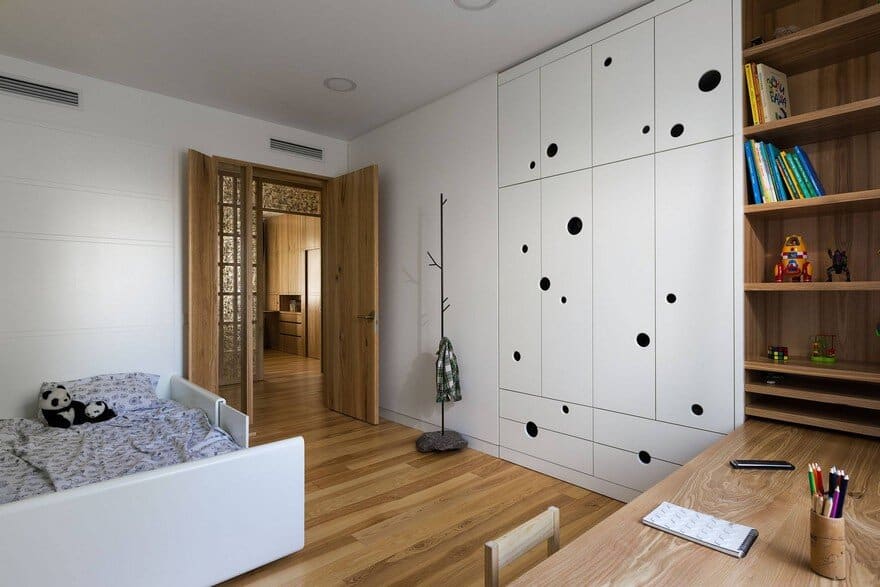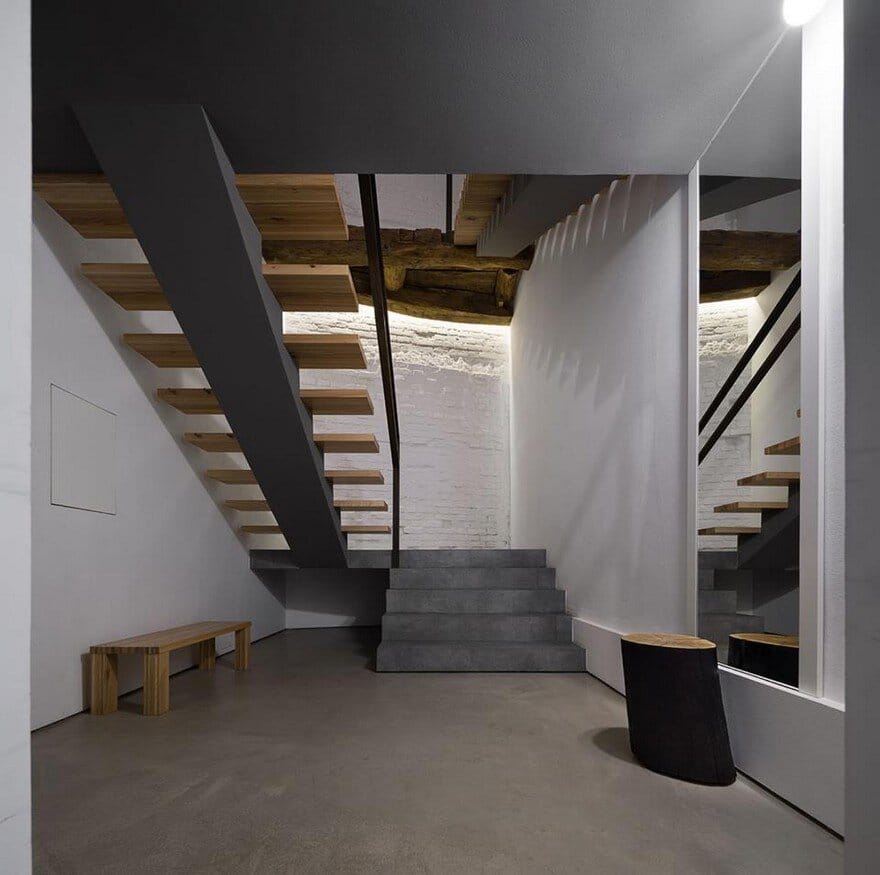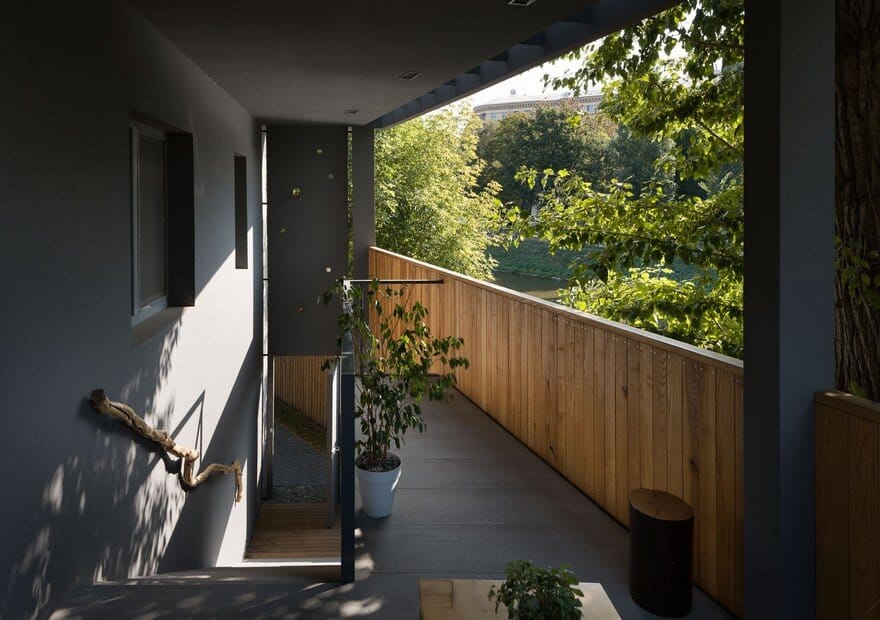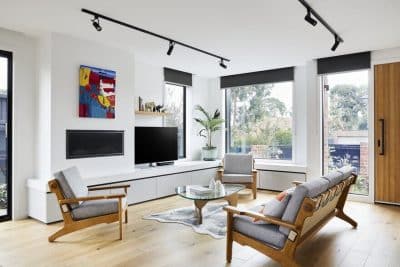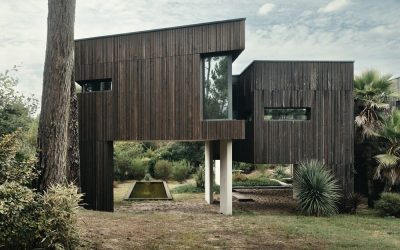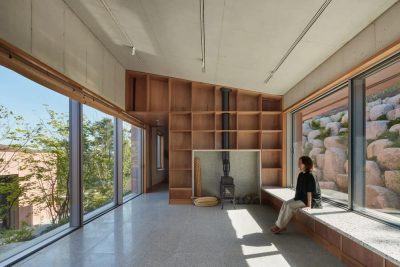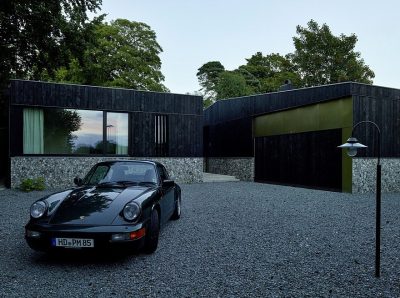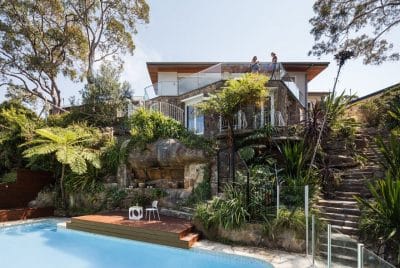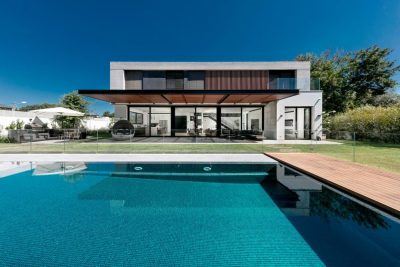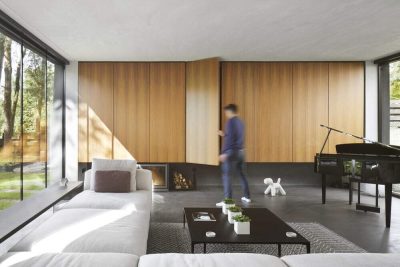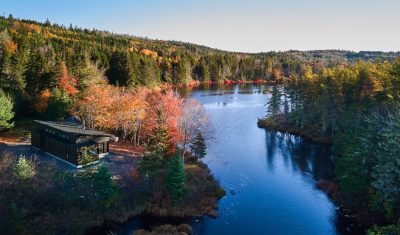Project: Waterline House
Architects: Ryntovt Design
Location: Kharkiv, Ukraine
Total area: 167 m2
Implementation: July 2017
Photography: Courtesy of Ryntovt Design
Brief
The task of the project was to organize a comfortable space for the life of a creative family with two children. Work was to be done with two apartments, which occupy the second floor of a two-story house of the 30s of last century. The Waterline House project required maximum inclusion, because it was not about minor adjustments, but about the reconstruction of internal and external volumes, including the entrance group and the main building, connecting the building with the building-architectural monument. It was important to enter a renovated house in every way into the existing architectural context of the old city.
Concept
The concept of the project Waterline House, located in the old center of Kharkov, is built on the desire of its authors to preserve the authenticity of the building and creating close contact with the inhabitants of the house, both with the surrounding nature and active urban life beyond the river.
The idea was dictated by the location of the house in the historic part of the city by the river with a view of the Assumption Cathedral and the adjoining to the monument of architecture. Species history required a separate dialogue: the terrace of the house is open to the embankment and city square with its life and activities. Due to the necessity and the main TOR of the architectural and landscape part of the project, it was to dissolve in the existing environment and the embankment lines, to organize the microclimate of the “forest” in a closed yard space, taking into account the historical background-a and create a garden of spruce and juniper from the western facade.
Planning
The shape of the house, the total area and the configuration of the window openings remained almost unchanged. Even the view of the river, which required replacing old windows with panoramic windows, did not outweigh the energy-saving factor and the desire to preserve the authenticity of the building.
For the same reason, galvanized iron was chosen for the roof – the most common roofing material in this part of the city. The facade is a dense gray color, which made it possible to “drown” the construction into the shadow of the environment.
In the process of dismantling, the authors of the project discovered the problem of the structural integrity of the building, which was solved with the help of a new rigid frame inside the old building, which keeps the walls, floors and roof. The closed courtyard has its atmosphere of intimacy, democracy and openness at the same time, which immediately sets up and includes …
The entrance group at home and front emphasizes the delicacy of the approach in designing. Light, almost airy, the staircase adjoins the old beam and uncovered brickwork of the early twentieth century. The parade was given special attention, given that this is a public space.
The interior navigation is built on horizontal and vertical links: connecting volumes and visual beacons already at the entrance reveal the main axis of space. Accents place pylons from an ash-tree array with a print of the forest printed on them, as well as a bearing wall connecting the bedroom of the owners of the house, a bathroom, a wardrobe for outer clothing and a central hall.
The long hall connects all the spaces and reveals the ascent to the attic floor, which is zoned with forest graphic pylons, the same print of the forest met us on the curtains textile in the front. To avoid the feeling of tonality, one of the rooms was screened by a system of partitions made of solid wood, glass and dry grass with a swinging door block, the same partition system performs the function of zoning between the living-dining room and the kitchen, but with a sliding door block. This zoning also contributes to the natural insolation of all spaces, including a long hall, since there are no window openings and direct natural sunlight in the central space, however, it is enough for a day now.
In total, the Project contains 4 living rooms: a master bedroom with its SU-coat and wardrobe, two children’s rooms, one of which has its own SU and a wardrobe, plus a guest room that also serves as a cabinet.
The successful orientation of the house allowed the private rooms of the house (bedroom, guest room and children’s) to orient to the east and west. On the south side, a living-dining room combined with the kitchen was organized (if desired, it can easily be excluded from the total volume with a sliding partition) and exit on the large terrace. The northern part was occupied by a hall, a wardrobe for outer clothing, an economic block and a guest bathroom.
Color and materials
Monochromatic palette of the interior emphasizes the democracy of space, gives it a meditative character. Minimalism and functionality of the design solution are supported by a neutral white-and-gray colorist and enriched with rich walnut textures. Almost paper snow-white curtains in the living room, a combination of dry grass, glass and ash massif in the screening of the cabinet and kitchen spaces create an atmosphere of asceticism of Scandinavian and Japanese interiors.
The internal white and gray surfaces are painted with chiaroscuros created from screened hay dividers and light apertures in massive door blocks with decorative doors on wooden hinges, they are also an important navigation and visual focus in the volume.
The entire interior of the Waterline House is filled with local codes. For example, traditional local ornaments can be seen on carpets made of cotton and Carpathian wool, made in Scandinavian technique by Ukrainian craftsmen. There are almost no serial items in the project. All furniture is designed and produced by the workshop ryntovt design, which once again emphasizes the importance of a delicate individual approach to any project.

